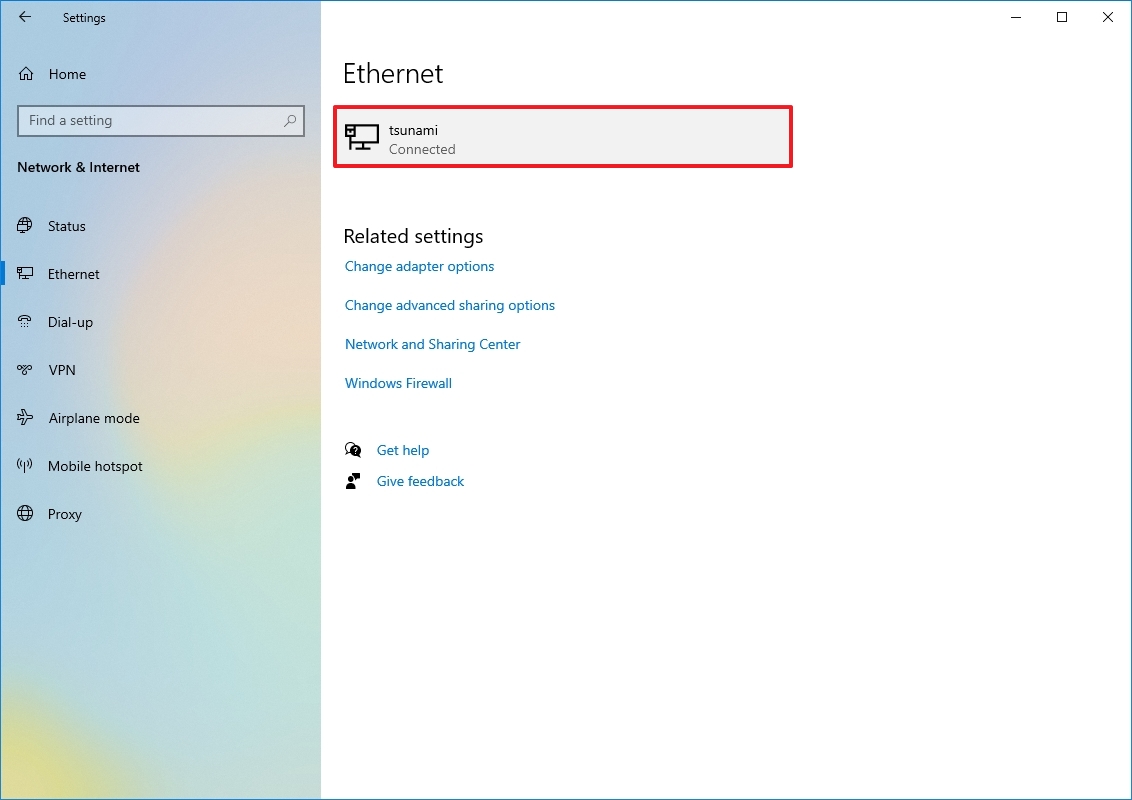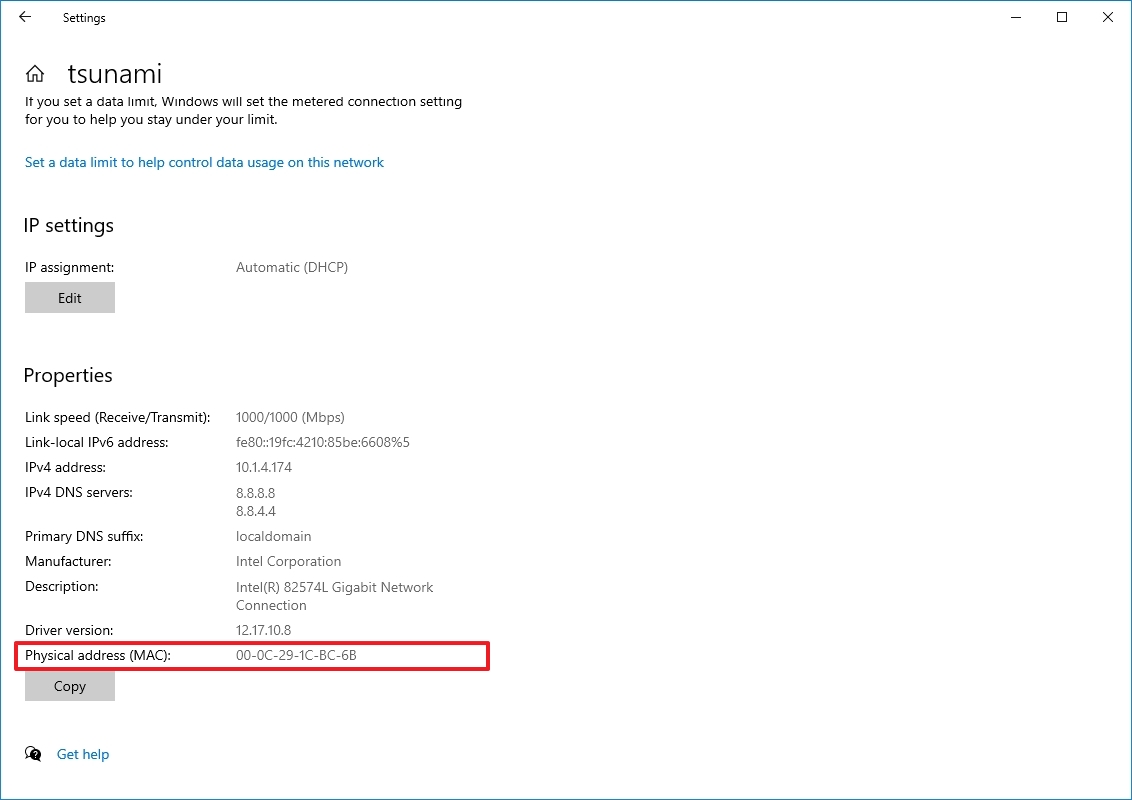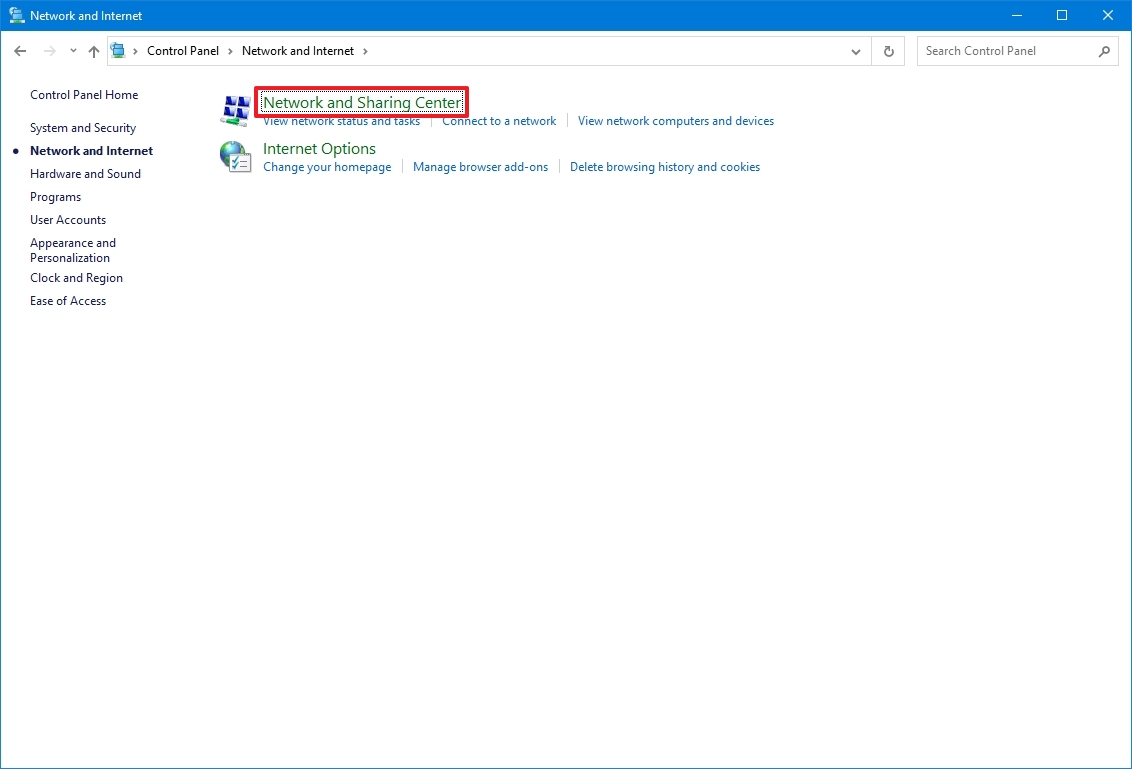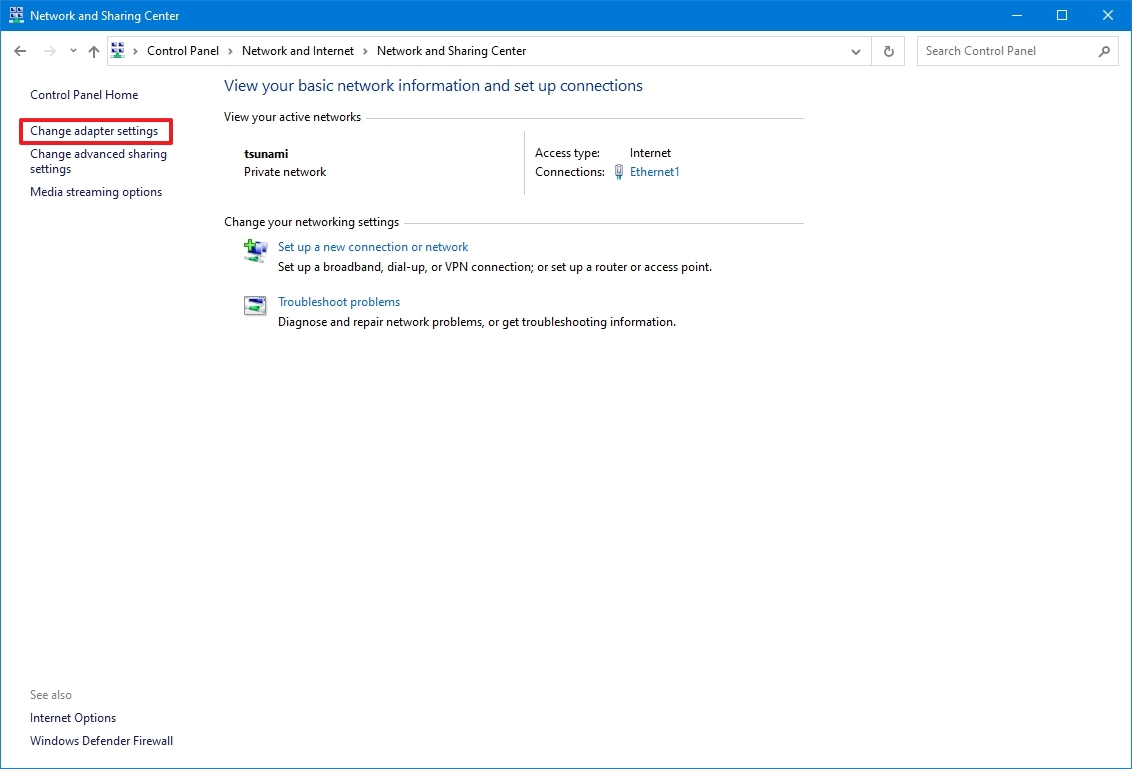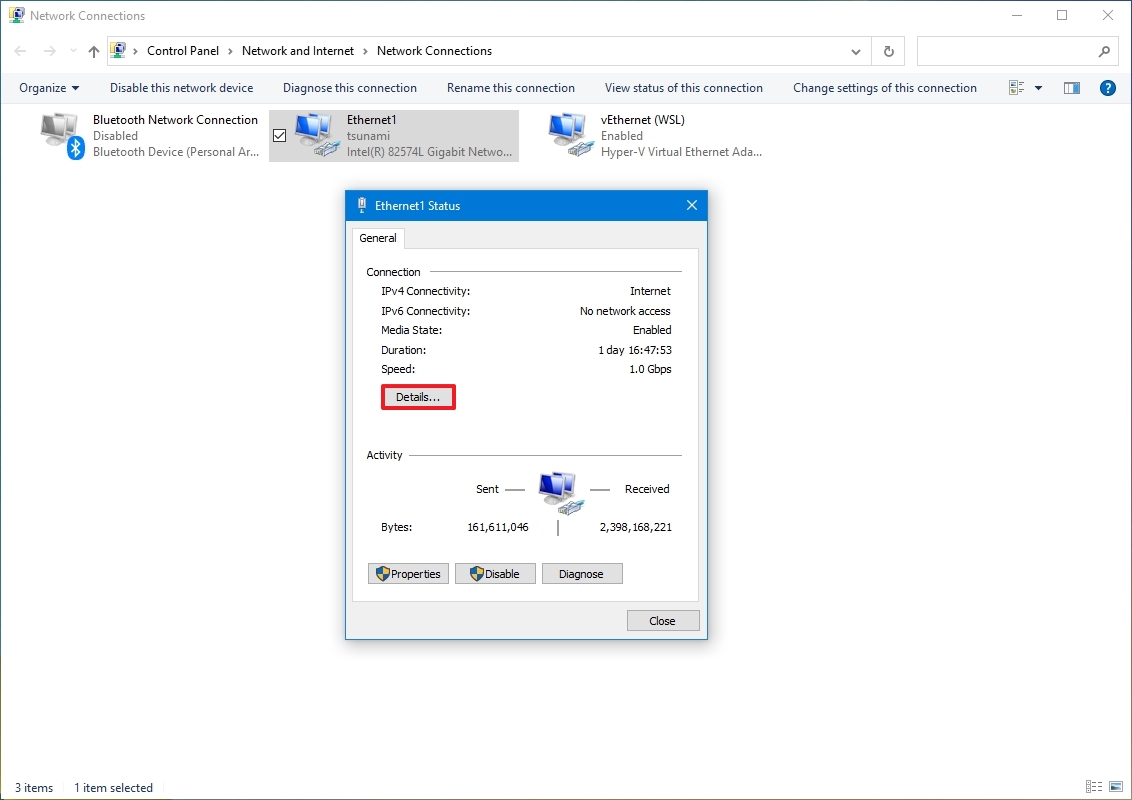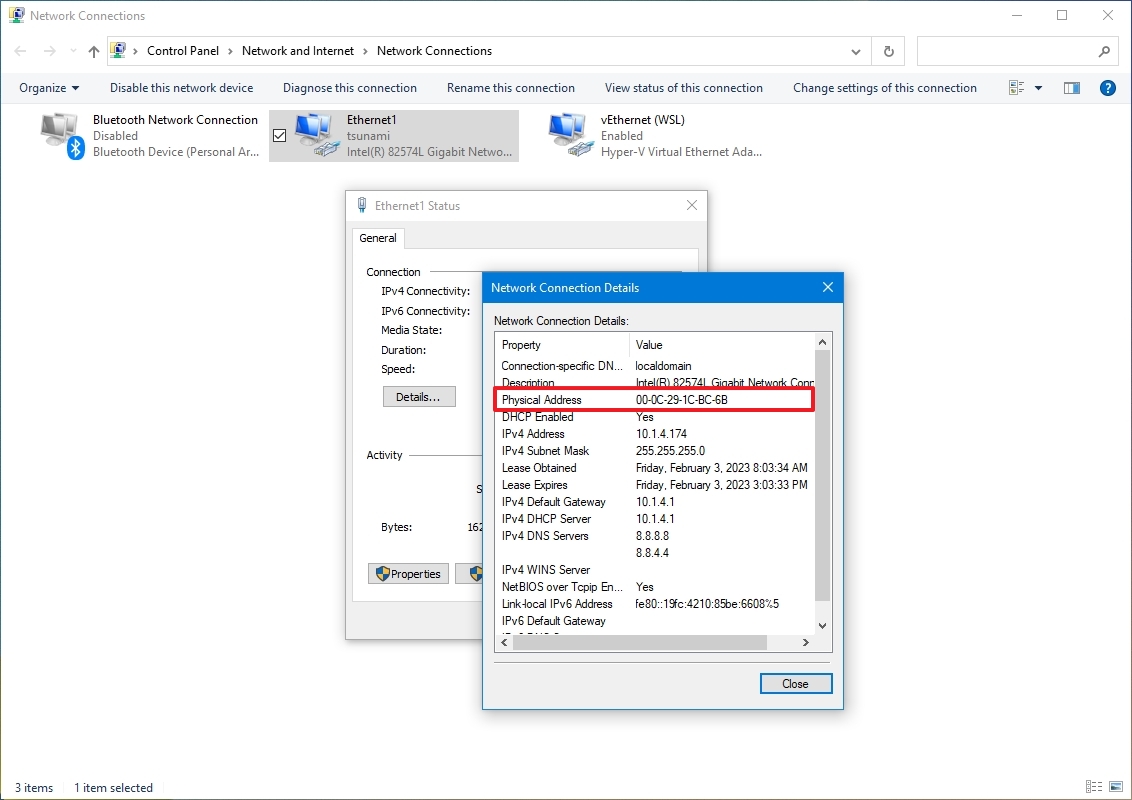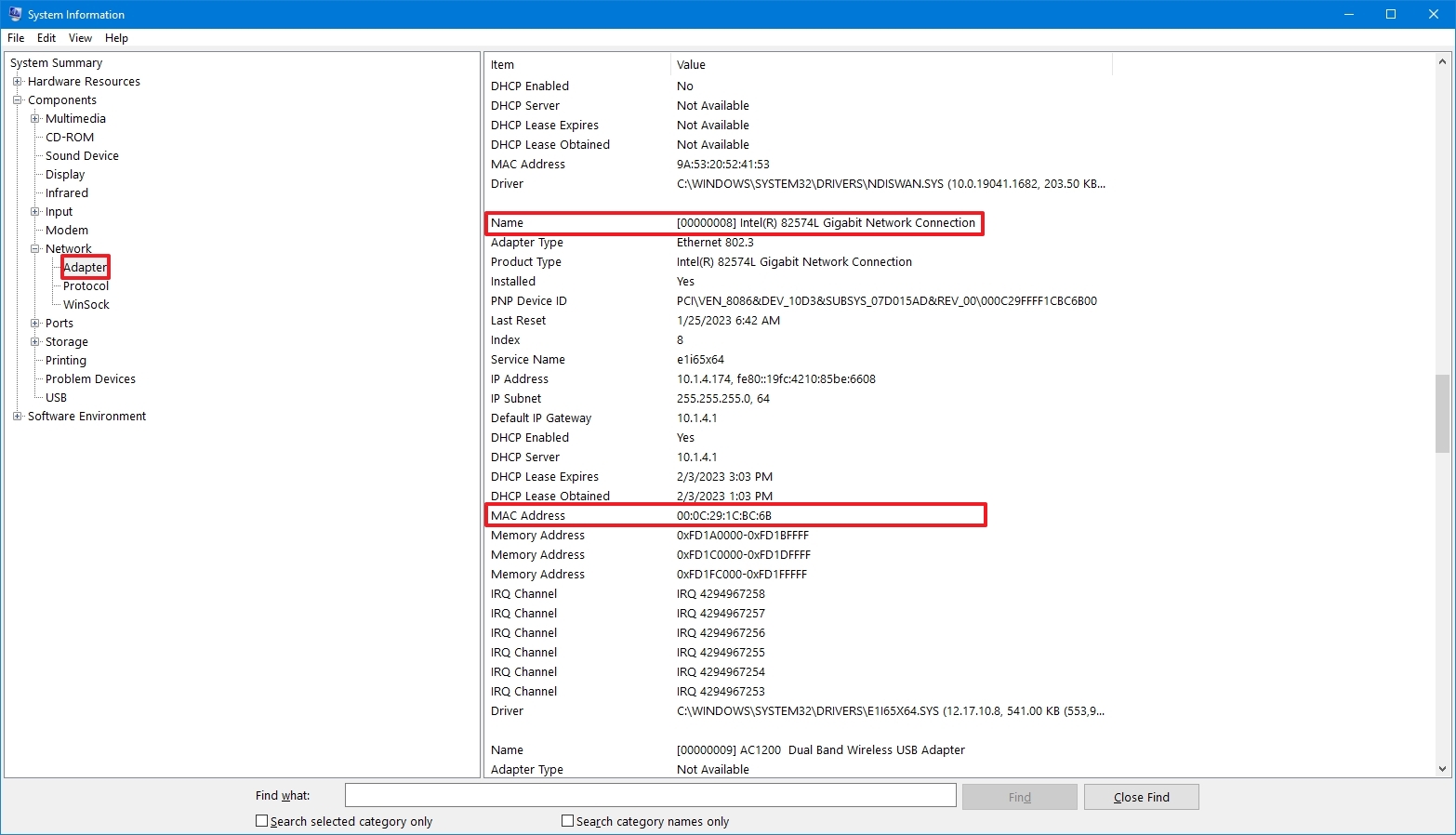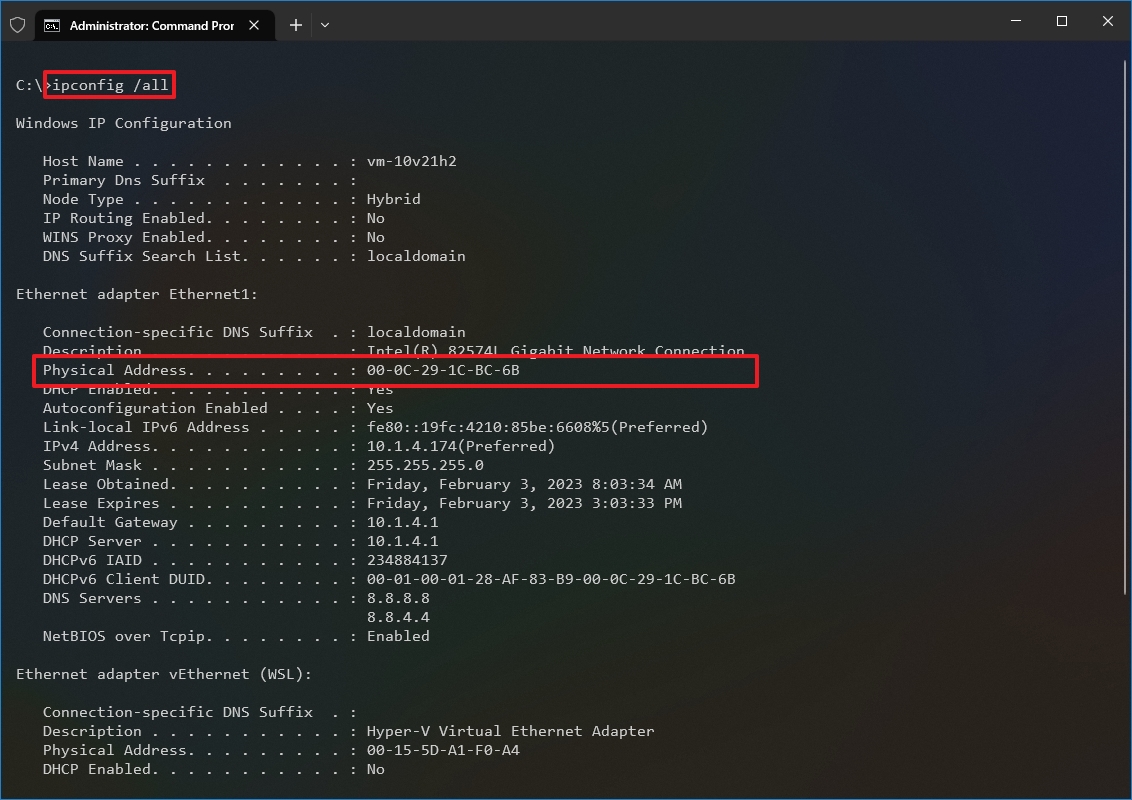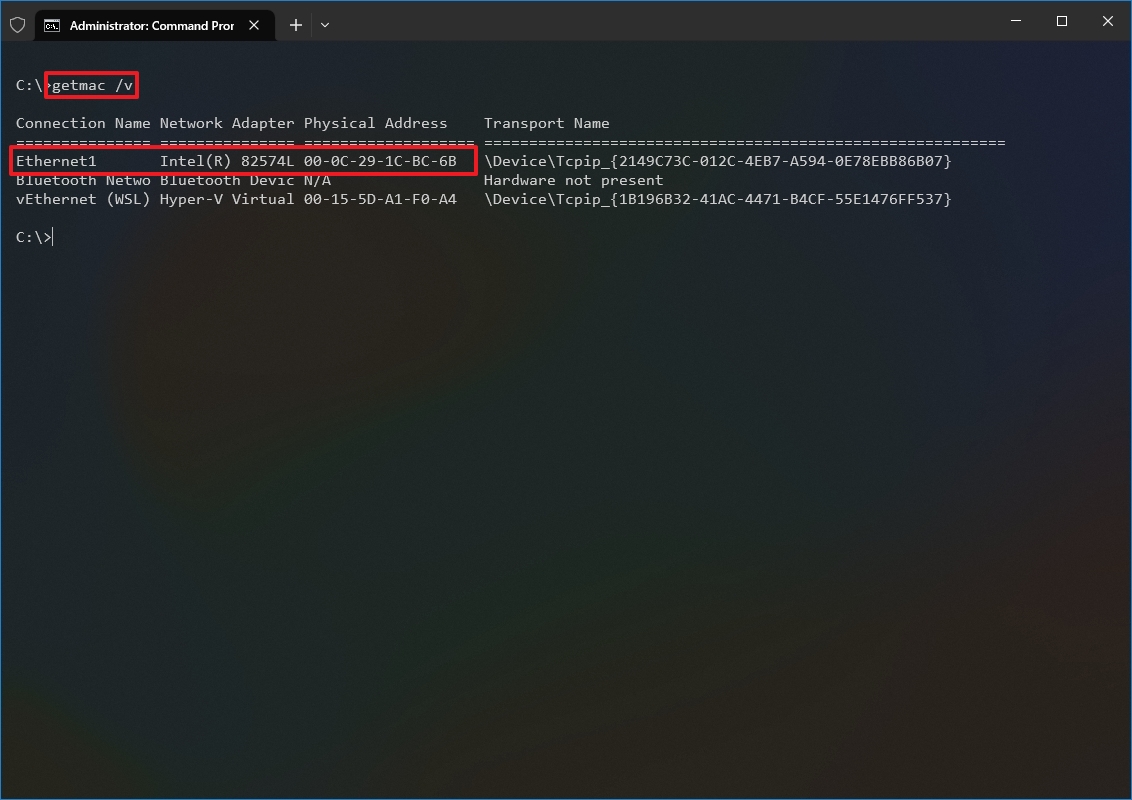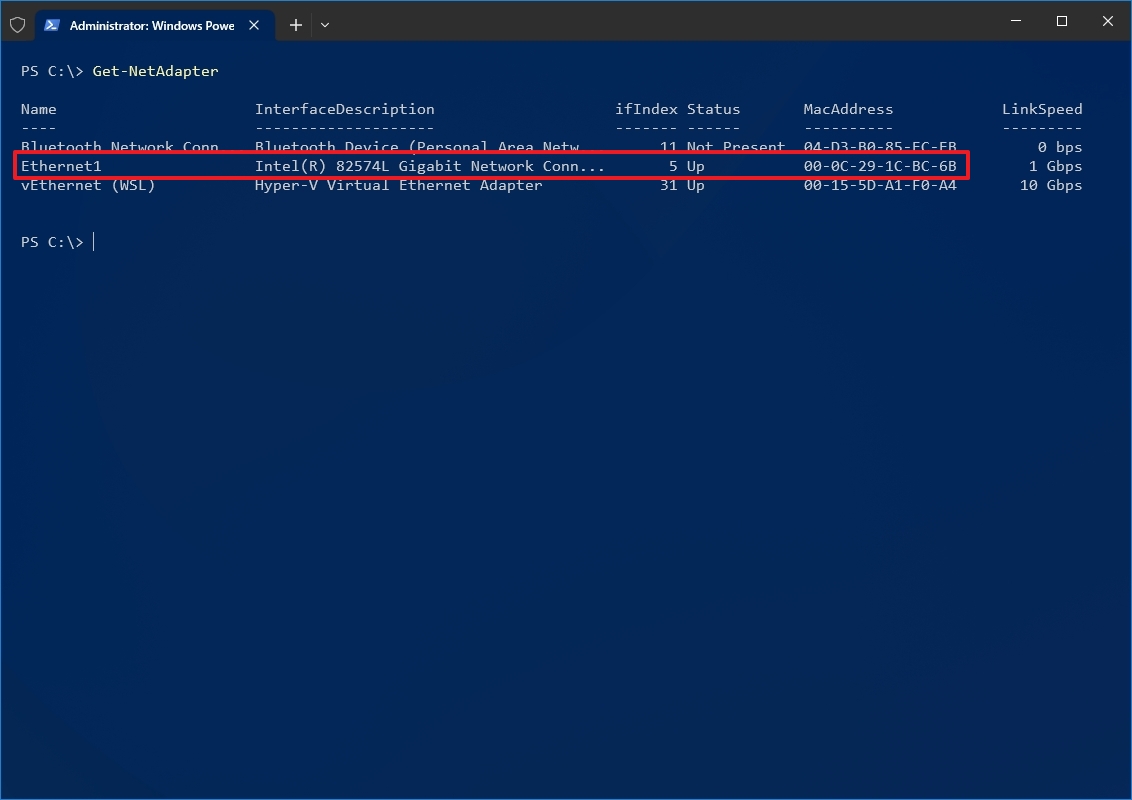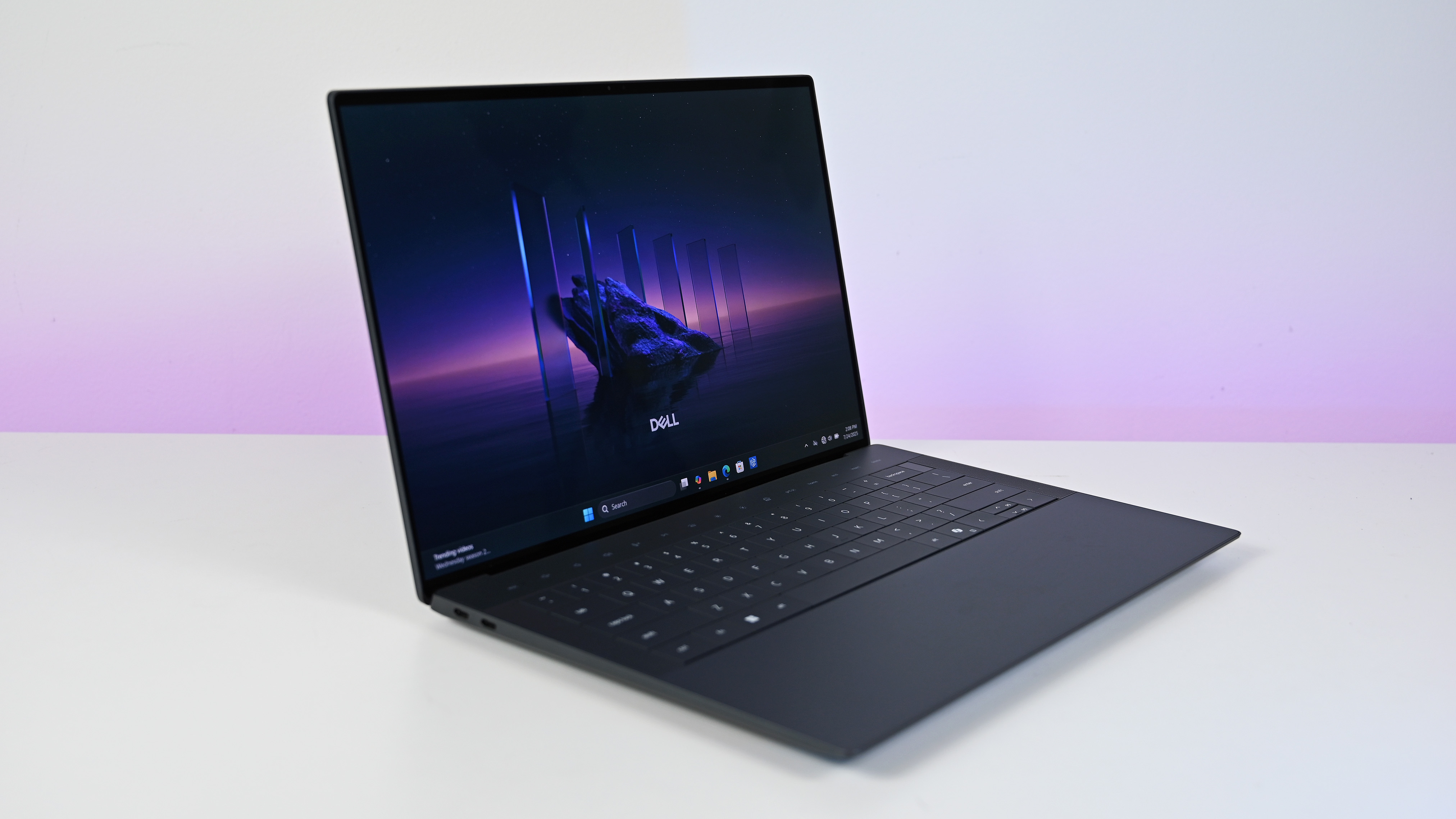How to find your PC's MAC address on Windows 10
Are you looking for the MAC address for the network card? Here are five ways to find this out on Windows 10.
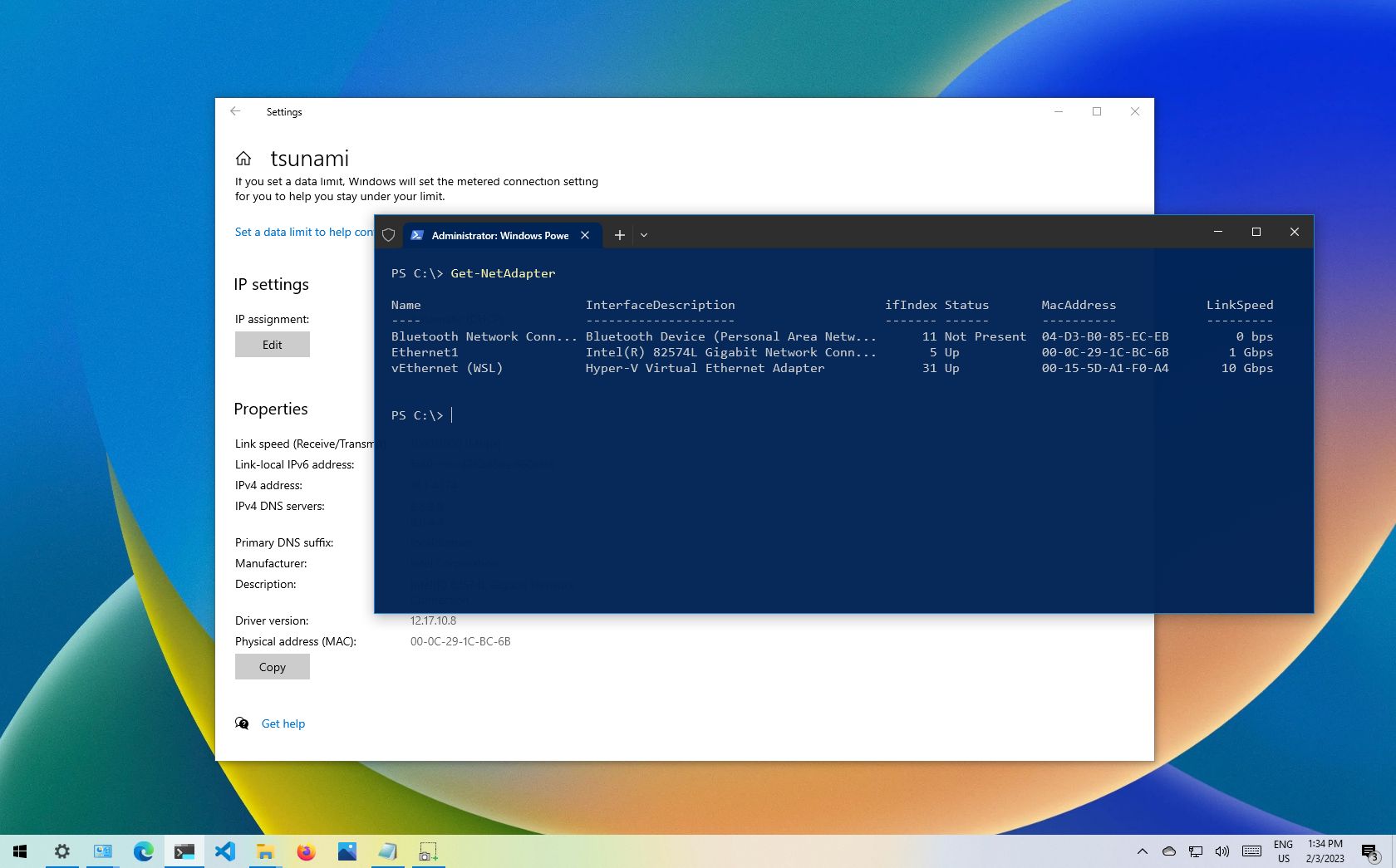
A Windows 10 computer and pretty much any device that connects to a network has a unique identification number known as the Media Access Control (MAC) address embedded on the physical network adapter (Ethernet, Wi-Fi, and Bluetooth), and it's a necessary component, alongside the Internet Protocol (IP) address, to allow communication between devices inside a local network.
Although you usually don't have to worry about this information, sometimes you may need to find out the MAC address of the network adapter. For example, to identify the device or configure networking permissions on a router.
Regardless of the reason, Windows 10 includes several ways to determine the hardware address using the Settings app, PowerShell, Command Prompt, Control Panel, and even using System Information.
This how-to guide will walk you through five days to find the MAC address on the network adapters available on Windows 10.
How to find MAC address from Settings on Windows 10
To find the MAC address on Windows 10 through the Settings app, use these steps:
- Open Settings.
- Click on Network & Internet.
- Click on Ethernet or Wi-Fi depending on your network connection.
- Select the connection.
- Under the "Properties" section, confirm the physical address (MAC) of the device.
Once you complete the steps, you'll have an understanding of the MAC address for the network adapter installed on your computer.
How to find MAC address from Control Panel on Windows 10
To determine the physical address of a network card on Windows 10 from Control Panel, use these steps:
All the latest news, reviews, and guides for Windows and Xbox diehards.
- Open Control Panel.
- Click on Network and Internet.
- Click on Network and Sharing Center.
- Click the "Change adapter settings" from the left pane.
- Double-click the Ethernet or Wi-Fi adapter depending on your connection.
- Click the Details button.
- Confirm the MAC address of the network adapter.
After you complete the steps, you'll know the physical address of the network card, which you can use filter access in the network settings or to identify a device on the router.
How to find MAC address from System Information on Windows 10
To view the MAC address through the System Information app, use these steps:
- Open Start.
- Search for System Information and click the top result to open the app.
- Expand the Components branch.
- Expand the Network branch.
- Select the Adapter option.
- Scroll down to the network adapter you want.
- Confirm the PC's MAC address.
Once you complete the steps, you'll be able to determine the media access control address of the network adapter.
How to find MAC address from Command Prompt on Windows 10
To find the MAC address from Command Prompt, use these steps:
- Open Start.
- Search for Command Prompt and click the top result to open the app.
- Type the following command to determine the MAC of your computer's network connection and press Enter: ipconfig /all
- The MAC will be listed in the "Physical Address" setting.
- (Optional) Type the following command to check the MAC address of the active network adapters and press Enter: getmac /v
After you complete the steps, Command Prompt will display the hardware address of all the network adapters installed on Windows 10.
How to find MAC address from PowerShell on Windows 10
To find the MAC address from PowerShell on Windows 10, use these steps:
- Open Start.
- Search for PowerShell and click the top result to open the app.
- Type the following command and press Enter: Get-NetAdapter
- Confirm the MAC address of the adapter install on Windows 10.
Once you complete the steps, PowerShell will list the MAC address for every network adapter configured on your Windows 10 device.
More resources
For more helpful articles, coverage, and answers to common questions about Windows 10 and Windows 11, visit the following resources:
- Windows 11 on Windows Central — All you need to know
- Windows 10 on Windows Central — All you need to know

Mauro Huculak has been a Windows How-To Expert contributor for WindowsCentral.com for nearly a decade and has over 22 years of combined experience in IT and technical writing. He holds various professional certifications from Microsoft, Cisco, VMware, and CompTIA and has been recognized as a Microsoft MVP for many years.
